Comments
What went wrong in the relationship between Jannik Sinner and Riccardo Piatti which was said to be almost paternal?
The reasons for such a breakup are still unknown, though the veracity of the news is no longer in doubt. Now there is talk of a supercoach such as Becker or Norman potentially stepping in.
Published
2 years agoon

Anyone who asked Jannik Sinner or Riccardo Piatti whether rumours about them parting ways were true did not receive answers such as “yes, it’s true”, but neither were such rumours denied, if it had been just hoax, or fake news.
People who are close to the two protagonists, have realized that a problem exists and is not ungrounded, despite ignoring what may have triggered news that today definitely seems sensational to most and even to the many who have been around the duo in recent times Down Under times and rightly prefer not to express themselves.
.
For those who know the history of Jannik, the redhead from Val Pusteria, who, aged 13, – when “discovered” in Ortisei by Massimo Sartori, Piatti’s collaborator at that time– left his beloved family, with incredible determination for a boy of that age, as well as his skis and balaclava to go … to the sea. On the Ligurian coast, to join Riccardo Piatti and his Piatti Tennis Center in Bordighera.
The combination had always been successful. Jannik, born in 2001, – as all Ubitennis readers of know – made an early breakthrough, winning the NextGen ATP Finals in Milan 2019 and then, after his first “senior” ATP title in Sofia, climbing up the rankings from 763 (at the end of 2018) to 78 (at the end of 2019), to 37 (at the end of 2020) to 10 (at the end of 2021). Meanwhile he enriched his already remarkable palmarès with 4 other ATP tournaments and had briefly been 9.
What happened between Riccardo Piatti and Jannik Sinner who hadn’t really got off to a bad start this year considering he had reached his second Grand Slam quarter-final at the Australian Open after the quarterfinals of Roland Garros 2020?
While waiting for official communications I rely on receiving information from a reliable source, I can only write partly what I know and partly what I suppose.
Those who were in Australia saw the Piatti and Jannik clan go out to dinner together, even on New Year’s Eve, and apparently live in good harmony. On his return to Italy, where the first murmurs of dissent emerged, they were amazed and incredulous.
Yet, some signs of serious tension had been perceived. Especially during Sinner’s match against Taro Daniel. At the end of a lost point Jannik had had an outburst, screaming at Piatti who had told him something in such an agitated way as to spark his reaction: “Yes, I use my head, and you, stay fucking calmer!” Everyone heard it, even the TV viewers.
Sinner’s harsh defeat against Tsitsipas, when he was overwhelmed as never before, unable to confront the aggressiveness and anticipation of Tsitsipas (who blasted scores of forehand winners) probably did not help soothe the tempers, which, perhaps hotter on court than outside, did not seem so compromised.
It is true, however, that in some of the most yearned for events – not necessarily the most important – the boy from Sesto Pusteria had not always seemed mentally ready and tactically focused.
I am referring to his Miami final he lost to Hubert Hurkacz and to some matches which were rather disappointing and not up to his very high expectations. And maybe it’s good they are so high. I will never forget seeing Jannik get furious when he lost to Wawrinka in 4 sets after playing a great match at the 2019 US Open: yet he was making his debut in a Grand Slam! “I should have won at least two of the three sets I lost,” he said as he left the court, leaving us quite bewildered by such self-confidence.
Jannik has never accepted defeats very well. A positive sign? Let’s say it was a good sign, the sign of a healthy ambition. A little played down by what he told us at the press conference: “These are all lessons I must learn from. I’m peeling potatoes, I’m not a cook yet.” A cook’s son, he knew what he was talking about.
Such apparent humility was perhaps in contrast with that boundless pride that prevented him from accepting clear defeats he suffered to Djokovic in Monte Carlo (6-4.6-2), to Nadal at Roland Garros (7-5.6-3.6-0), even more than in the first rounds of Queen’s (Draper) or Wimbledon (Fucsovics in 4 sets “It still takes a little patience to get around to grass, I knew it”), or some missteps (Rinderknech in Lyon: “A step backwards”…).
After his very first experience against Nadal at Roland Garros 2020, when he had served for the first set and when he had been up a break in the second, Jannik was convinced he would do better the next time. Much better. Instead, he fell short of his expectations both in Rome and in Paris, where he even did worse.
Those stark defeats with the two Fabs, hadn’t been swallowed. Just as those three defeats that nearly scuppered his participation in the ATP Finals: against Tiafoe (what a great gift! In that occasion Sinner was nowhere near as cold as he was supposed to be…), against Alcaraz (losing to a younger player than you really hurts, especially after you have been crowned best young tennis player in the world for more than a year by all the tennis stars, before the surge of Juan Carlo Ferrero’s protégé), and against the old steel-hipped Murray.
Sinner did not always seem as cold as his nickname would make you believe. Perhaps because of his South Tyrolean origins… but not everyone is Gustav Thoeni.
However, in my view the seven-year itch of the Piatti-Sinner couple … does not arise from disappointment; indeed, results are extraordinary. Top-ten, quarter-final at the Australian Open at 20 years old! That would be inconceivable.
Twenty years old. However we must not forget that Jannik is still a twenty-year-old boy, although apparently much more mature than his age. Jannik has emerged from a rather modest background, and yet he is already a multimillionaire, suddenly smothered by mountains of money, by a swarm of sponsors, by daunting expectations (far more than those endured by Berrettini, who has also won much more), by a popularity that would make any adult lose their head. Imagine someone so much younger…
Arrogant? While the events unrolled in this distressing scenario maybe Jannik had in fact carefully been formulating a plan, with a touch of healthy ambition and, possibly, deep down, a pinch of arrogance – who knows? Maybe, I really can’t be sure, this arrogance even drove him to blame some of his recent defeats and weaknesses on his technical corner, rather than on himself. That could be why we first heard him speak with such conviction about the need for a super-coach to join his team, back in Australia. “I know who it is, but I’m not going to tell you for now.”
Boris Becker? When we ruled out a few famous coaches who wouldn’t have been available for Jannik on a full-time schedule, like McEnroe, Moya, Ljubicic, Wawrinka, Lendl, Enqvist (who’s started working with Tsitsipas but most likely won’t be able to talk to him in Greek, as Apostolos does…), Becker’s name came up – what with him being a Monte Carlo resident, like Jannik, and stopping by a few times at Piatti Tennis Center in Bordighera.
We can only presume that Boom Boom Becker’s candidacy, favoured by them having a language in common, would probably have been supported by Piatti himself, though maybe a touch grudgingly. Now that Riccardo has found himself pretty incredibly pushed out of the picture, there’s a new duo preparing to pose: Boris Becker and Simone Vagnozzi, the latter having coached Marco Cecchinato back in 2018, when the Sicilian tennis player proved his worth at Roland Garros.
Although the latest word is that Sweden’s Magnus Norman is considered to be the best candidate to coach Sinner along with Vagonzzi. Former world No.2 Norman is known for his colloboration with Stan Wawrinks who is managed by Starwing Management. The same company who are also in charge of Sinner’s affairs.
Clashes over Scheduling: It appears that there have been debates between the two over their plans for the coming weeks. Piatti wanted Sinner to play less in the coming days ahead of the Davis Cup. However, the Italian had stated that he wanted to play in Dubai ahead of the team event. It is also understood that Sinner wanted his mentor to be present during more of his maches (for example Piatti didn’t travel to Wimbledon last year).
Economic Reasons? Could the Sinner-Piatti breakup have been caused by economic reasons – hard to tell if we’ll ever know for sure – rather than strictly technical issues that would be linked to results that are for the most part irrefutably good?
I believe the technical hypothesis, regardless of the actual results, is pretty unlikely. Though – truth be told – I have noticed Riccardo Piatti slowly renouncing his leading role in the Piatti – Sinner relationship, while the young redhead’s results and ranking have been growing at the same pace as his personality has.
The player-coach relationship is never at its best when the player is the one driving it. The coach ends up being a subordinate worker, even when the decision-making power should be his by right.
People who’ve been closer to them than me, have noticed Piatti and his clan getting increasingly anxious, even excessively nervous, and overprotective. As if he feared losing control of him. I witnessed a bizarre episode in Australia a couple of years ago, that led me to think this might all be age-related. We elderly folks, you see, are easy prey to anxiety, distress, and heightened emotions in general.
We’re talking about a Riccardo Piatti who was creating barriers, suspicious of journalists, as if he were unaware that they too contribute to making his athlete more popular in the eyes of the sponsors, thus indirectly increasing his income as well. But he was suspicious of people in general and other coaches like Massimo Sartori who deserves a great credit for discovering the enfant-prodige. Sartori indeed was sidelined by Piatti, who had Sinner mentored by lesser-known coaches such as Andrea Volpini, as if he was afraid that Sartori – who did an outstanding job with Andreas Seppi – could somehow overshadow him.
Shared choices? We do not know exactly how many of Jannik’s choices were his, or entirely shared or suggested by Piatti: the choice not to participate in the Olympics and the Davis Cup call. At the time, they always seemed 100% shared and agreed between athlete and coach. As of today, we may ask ourselves questions… for example about that very risky decision to change Jannik’s serving motion back in August 2021.
A rather unusual situation. During the Davis Cup in Turin, where Sinner won his matches against Isner, Galan and Cilic, Piatti asked to be present with all his staff. He coached Sinner at the end of each session, along with captain Volandri and the rest of the team. The other Italian players either had no coach, or just one. A fairly anomalous situation and perhaps not too popular with the Italian camp. Italy will play a Davis match against Slovakia on March 4-5 in Bratislava, but Berrettini will not be there while Sinner, on the other hand, despite having just recovered from Covid, is expected to play. Was it his decision? Was this choice suggested, or maybe opposed by Piatti, who has always had his own ideas on programming?
The next tournaments. Changing a coach now after 7 years, considering that the Dubai tournament will start at the end of February…the events of Indian Wells and Miami will unfold before the start of the clay season, is a giant leap of faith.
Sinner’s share of ATP points. In February Jannik needs to defend only 10 points, coming from Australian Open 2021, after having already lost 90 points from Rotterdam 2020 this week. In March he will have to be on the lookout for 135 points total, 45 in Marseille and 90 in Dubai, while in April there will be 825 points at stake, including 600 from the final in Miami, 45 from Monte Carlo and 180 from Barcelona.
A divorce almost always leaves regrets in its wake. Much depends on the causes of the breakup. Let’s hope wounds will be easily and quickly healing, for both.
Translated by Giulia Bosatra, Michele Brusadelli, Kingsley Elliot Kaye
You may like
-


Jannik Sinner Withdraws From Olympics Due To Tonsillitis
-


Jannik Sinner Explains Wimbledon Medical Timeout
-


Daniil Medvedev Ends Five-Match Losing Run Against Sinner To Reach Wimbledon semis
-


(VIDEO) Jannik Sinner Looking Sharper Than Carlos Alcaraz Heading Into Quarter-Finals
-


Boris Becker: “Sinner Is The Most Confident Player On The Tour
-


Jannik Sinner Hails ‘Most Important Moment’ Of Wimbledon Run So Far Ahead Of Medvedev Showdown
Comments
Roland Garros 2024: Has Crowd Noise Reached Boiling Point Or Is It Hyperbole?
Daniil Medvedev was one of the players who commented on the debate surrounding the Roland Garros crowd.
Published
2 months agoon
30/05/2024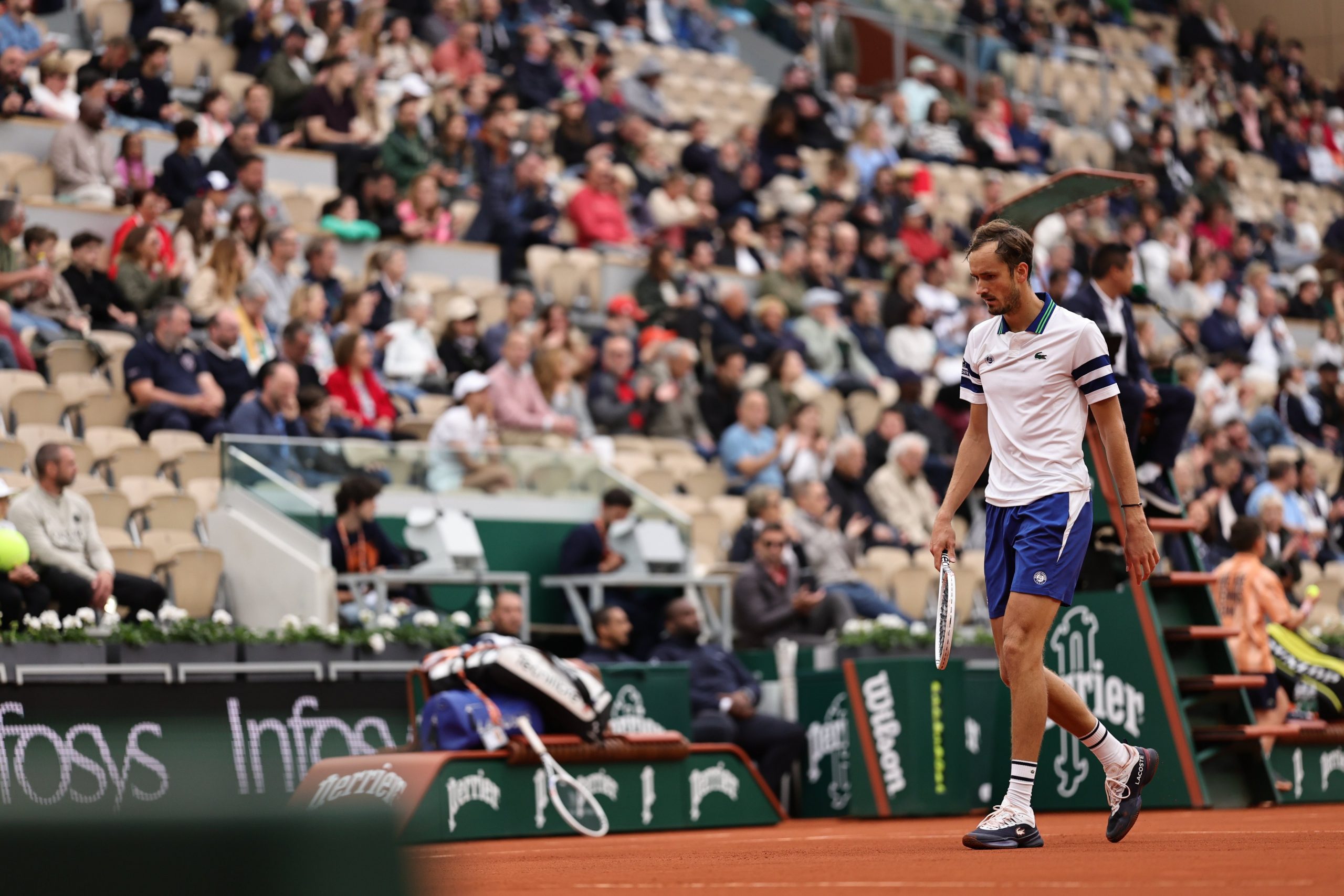
Roland Garros has often been a place with energetic crowds that have been involved in plenty of controversial moments but has it reached boiling point this year?
The Roland Garros have been involved in lots of heated moments over the years whether it’s been finals involving Novak Djokovic, whether it’s been that epic Garbine Muguruza against Kristina Mladenovic clash or any Alize Cornet or Gael Monfils match.
The French crowd isn’t afraid to show its true feelings as it’s been one of the most passionate atmosphere’s in the world.
However there has been debate in the past as to whether the crowd has been bordering on the edge of being disrespectful.
That debate has boiled over at this year’s event as it all started when David Goffin claimed the crowd on Court 14 spat gum in his direction during his five set win over Giovanni Mpetshi Perricard.
Furthermore Iga Swiatek was pleading with the crowd in her on-court interview to remain silent during the point as they were seen shouting during a volley.
This kind of behaviour from the crowd as well as the retaliation from the players has seen tournament director Amelie Mauresmo see stricter rules being enforced by security and umpires on both sides.
So has this issue reached boiling point or is this an over exaggeration? Well here is what some of the players think.
Paula Badosa
“I think she (Swiatek) cannot complain, because I played Court 8 and 9 and you can hear everything. Like, I can hear Suzanne Lenglen, Philippe Chatrier, Court 6, 7 during the points.
“I think she’s very lucky she can play all the time on Philippe Chatrier and she’s okay with that. But I don’t mind. As I said, I played in small courts these days, and I was hearing so much noise. In that moment, I’m just so focused on myself and on my match that it doesn’t really bother me.
“Honestly, I like when the fans cheer and all this. I think I get pumped. Look, we had a very tough situation years ago when we were playing without fans with the COVID situation, so now, for me, I’m so happy they’re back and I think they’re very important for our sport.”
Grigor Dimitrov
“I think us as tennis players we’re very particular with certain things, and I always say one is the background. For example, let’s say if it’s too bright or if you have, let’s say, big letters, whatever it is, it’s a bit more difficult.
“Also, with the crowd, if you see the crowd moving in the back, it’s very, very tough because we are so focused on the ball. When we see that is moving, automatically your eye is catching that. On the movement part, I’m all for being absolutely still.
“Now, with the sound, there’s not much, I guess, we can do. I think either/or I’m very neutral on that, to be honest. I could play, I don’t know, with music on and all that. Of course, I prefer when everything is, like, a little bit more tame, so to speak, but this is a little bit out of our control.”
Daniil Medvedev
“I think it’s very tough, because there are two ways. So right now, in a way, there are, like, the kind of, I would say, unofficial rule — or actually an official rule, don’t interrupt players before second serve and when they’re ready to serve and during the point. Personally, I like it. Because I think, I don’t know if there are other sports than tennis and golf that have it, but because it’s so technical and, like, I would say every millimeter of a movement you change, the ball is going to go different side.
“So, you know, if someone screams in your ear, your serve, you could double fault. That’s as easy as that. That’s not good. At the other side, if there would be no this rule and it would be allowed all the time, I think we would get used to it. Now what happens is that 95% of matches, tournaments, it’s quiet. And then when suddenly you come to Roland Garros and it’s not, it disturbs you, and it’s a Grand Slam so you get more stress and it’s not easy.
“Yeah, I think playing French in Roland Garros is not easy. That’s for sure. I think a lot of players experience it. I would say that in US Open and Wimbledon is not the same. Australia can be tough. I played Thanasi once there on the small court. It was, whew, brutal. Yeah, I think, you know, it’s a tough question. I think as I just responded, it’s good to have energy between points, but then when you’re ready to serve, it’s okay, let’s finish it and let’s play tennis. Same before first and second serve. And then when there is a changeover, when there is between points, go unleash yourself fully, it’s okay.
“But again, when you’re already bouncing the ball, you want to get ready for the serve, if it would be 10 years we would be playing loud, we would not care. But for the moment it’s not like this so when you get ready for serve, you want to toss the ball, then suddenly ten people continue screaming, the serves are not easy, so for the moment, let’s try to be quiet.”
Conclusion
In conclusion, this year’s crowd has been more volatile and aggressive then seen in previous years which is a big problem for player safety.
However on a whole the crowd is also more passionate and entertaining which makes for a quality product.
As long as the crowd can control their temperament then most of the incidents are nothing but hyperbole and something the players need to get used to in a hostile Parisian environment.
Comments
Steve Flink: The 2024 Italian Open Was Filled with Surprises
Published
2 months agoon
20/05/2024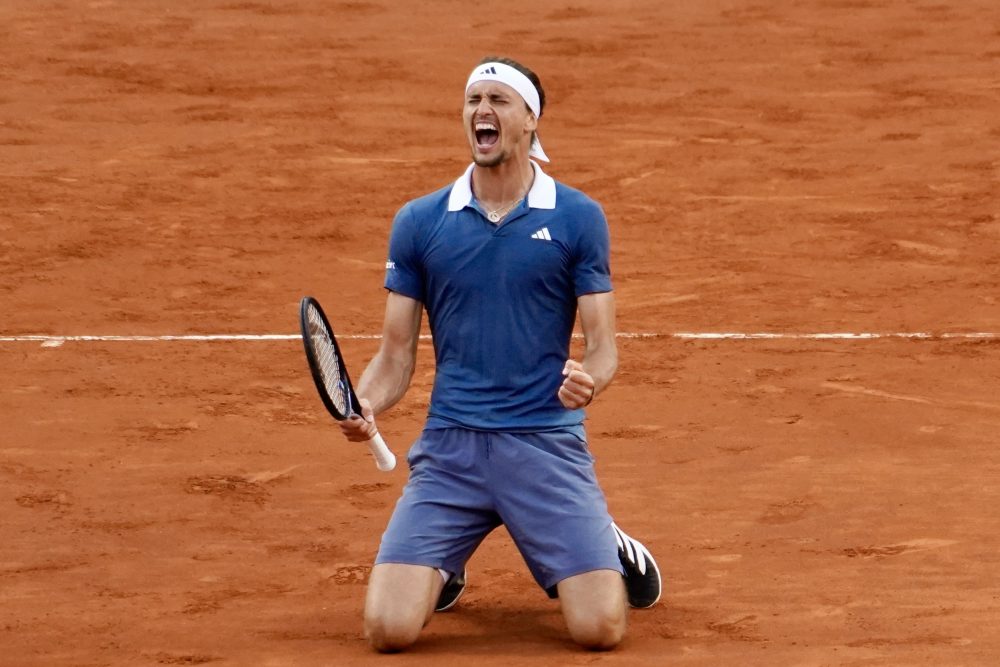
In sweeping majestically to his sixth career Masters 1000 title along with a second crown at the Italian Open in Rome, Germany’s Sascha Zverev put on one of the most self assured performances of his career to cast aside the Chilean Nicolas Jarry 6-4, 7-5 in the final. By virtue of securing his 22nd career ATP Tour title and his first of 2024, Zverev has moved from No. 5 up to No. 4 in the world. That could be crucial to his cause when he moves on to Roland Garros as the French Open favorite in the eyes of some experts.
Zverev is long overdue to win a major title for the first time in his storied career. Not only has he won those six tournaments at the elite 1000 level, but twice— in 2018 and 2021—he has triumphed at the prestigious, year end ATP Finals reserved solely for the top eight players in the world. This triumph on the red clay of Rome is a serious step forward for the 27-year-old who has demonstrably been as prodigious on clay as he is on hard courts.
Seldom if ever have I seen a more supreme display of serving in a final round skirmish on clay than what Zverev displayed against Jarry on this occasion. He never faced a break point and was not even pushed to deuce. Altogether, Zverev took 44 of his 49 service points across the two sets in his eleven service games. He won 20 of 21 points on his deadly delivery in the first set and 24 of 28 in the second. He poured in 80% of his first serves and managed half a dozen aces and countless service winners. His power, precision and directional deception was extraordinary.
Although the scoreline in this confrontation looks somewhat close, that was not the case at all. Jarry was thoroughly outplayed by Zverev from the backcourt, and despite some stellar serving of his own sporadically, he could not maintain a sufficiently high level. He did manage to win 78% of his first serve points, but Jarry was down at 35% on second serve points won. In the final analysis, this was a final round appointment that was ultimately a showcase for the greatness of Zverev more than anything else. Jarry was too often akin to a spectator at his own match as Zverev clinically took him apart.
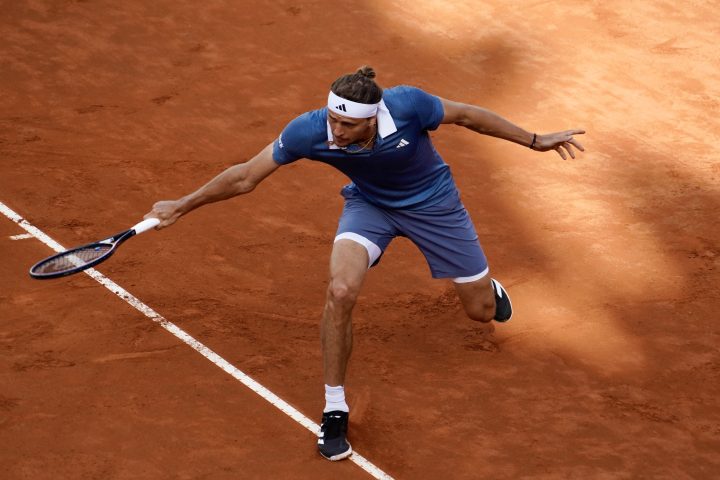
Zverev and Jarry arrived in the final contrastingly. The German’s journey to the title round was relatively straightforward. After a first round bye, he handled world No. 70 Aleksandar Vukic. Zverev dismissed the Australian 6-0, 6-4. The No. 3 seed next accounted for Italy’s Luciano Darderi 7-6 (3), 6-2. In the round of 16, Zverev comfortably disposed of Portugal’s Nuno Borges, ousting the world No. 53 by scores of 6-2, 7-5. Perhaps Zverev’s finest match prior to the final was a 6-4, 6-3 quarterfinal dissection of Taylor Fritz, a much improved player on clay this season. Zverev did not face a break point in taking apart the 26-year-old 6-4, 6-3 with almost regal authority from the backcourt.
Only in the penultimate round was Zverev stretched to his limits. Confronting the gifted Alejandro Tabilo of Chile, he was outplayed decidedly in the first set against the left-hander. The second set of their semifinal was on serve all the way, and the outcome was settled in a tie-break. With Tabilo apprehensive because he was on the verge of reaching the most important final of his career, Zverev was locked in. After commencing that sequence with a double fault, Zverev fell behind 0-2 but hardly put a foot out of line thereafter.
He did not miss a first serve after the double fault and his ground game was unerring. Zverev took that tie-break deservedly 7-4, and never looked back, winning 16 of 19 service points, breaking an imploding Tabilo twice, and coming through 1-6, 7-6 (4), 6-2. Zverev displayed considerable poise under pressure late in the second set to move past a man who had produced a startling third round upset of top seeded Novak Djokovic.
As for Jarry, the dynamic Chilean had a first round bye as well, and then advanced 6-2, 7-6 (6) over the Italian Matteo Arnaldi. Taking on another Italian in the third round, Jarry survived an arduous duel with Stefano Napolitano 6-2, 4-6, 6-4. He then cast aside the Frenchman Alexandre Muller 7-5, 6-3.
Around the corner, trouble loomed. Jarry had to fight ferociously to defeat No. 6 seed Stefanos Tsitsipas, who had by then established himself in the eyes of most astute observers as the tournament favorite. Tsitsipas has been revitalized since securing a third crown in Monte Carlo several in April. And in his round of 16 encounter, the Greek competitor had looked nothing less than stupendous in routing the Australian Alex de Minaur 6-1, 6-2.
Unsurprisingly, Tsitsipas seemed in command against Jarry in their stirring quarterfinal. He won the first set and had two big openings in the second. Jarry served at 3-3, 0-40. Tsitsipas missed a lob off the backhand by inches on the first break point before Jarry unleashed an ace followed by a service winner. The Chilean climbed out of that corner and got the hold. Then, at 5-5, Tsitsipas reached double break point at 15-40 but once more he was unable to convert. He got a bad bounce on the first break point that caused him to miss a forehand from mid-court. On the second, Jarry’s forehand down the line was simply too good.
Now serving at 5-6, Tsitsipas had not yet been broken across two sets. One more hold would have taken him into a tie-break and given him a good chance to close the account. But Tsitsipas won only one point in that twelfth game and a determined Jarry sealed the set 7-5.
Nonetheless, Tsitsipas moved out in front 2-1 in the third set, breaking serve in the third game. Jarry broke right back. Later, Tsitsipas served to stay in then match at 4-5 in that final set. He fought off three match points but a bold and unrelenting Jarry came through on the fourth to win 3-6, 7-5, 6-4. That set the stage for a semifinal between Jarry and a surging Tommy Paul, fresh from back to back upset wins over Daniil Medvedev and Hubert Hurkacz.
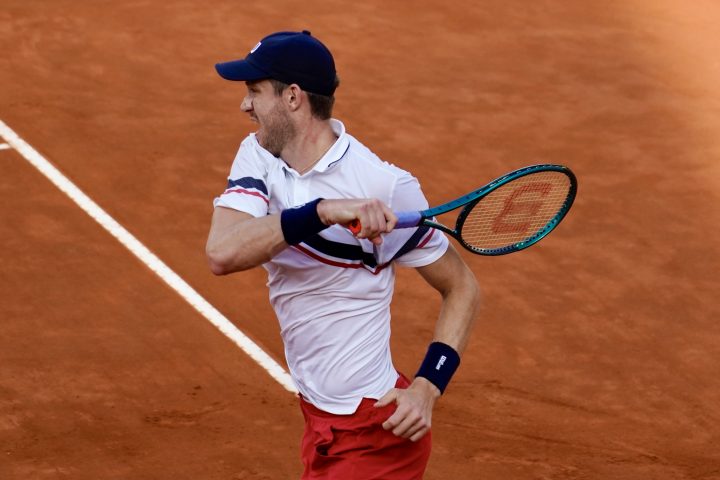
Jarry and Paul put on a sparkling show. Jarry took the opening set in 42 minutes, gaining the crucial service break for 5-3 and serving it out at 15 with an ace out wide. When Jarry built a 4-2 second set lead, he seemed well on his way to a straight sets triumph. But Paul had broken the big serving Hurkacz no fewer than seven times in the quarters. He is a first rate returner. The American broke back for 4-4 against Jarry and prevailed deservedly in a second set tie-break 7-3 after establishing a 4-0 lead.
Briefly, the momentum was with Paul. But not for long. Jarry saved a break point with an overhead winner at 2-2 in the final set, broke Paul in the next game, and swiftly moved on to 5-2. At 5-3, he served for the match and reached 40-0. But he missed a difficult forehand pass on the first match point and Paul then released a backhand down the line winner and a crosscourt backhand that clipped the baseline and provoked a mistake from Jarry.
The Chilean cracked an ace to garner a fourth match point, only to net a backhand down the line volley that he well could have made. A resolute Paul then advanced to break point but Jarry connected with a potent first serve to set up a forehand winner. The American forged a second break point opportunity but Jarry erased that one with a scorching inside in forehand that was unanswerable. Another ace brought Jarry to match point for the fifth time, and this one went his way as Paul rolled a forehand long. Jarry was victorious 6-3, 6-7 (3), 6-3.
Meanwhile, while all of the attention was ultimately focussed on the two finalists, it was on the first weekend of the tournament that the two dominant Italian Open champions of the past twenty years were both ushered out of the tournament unceremoniously. First, Rafael Nadal, the ten-time champion in Rome, was beaten 6-1, 6-3 in the third round by Hurkacz as he competed in his third clay court tournament since coming back in April at Barcelona.
He had lost his second round match in Barcelona to De Minaur. In his next outing at Madrid, Nadal avenged that loss to the Australian and managed to win three matches altogether before he was blasted off the court by the big serving and explosive groundstrokes of Jiri Lehecka. In Rome, the Spaniard won one match before his contest with Hurkacz. The first two games of that showdown lasted 27 minutes. Nadal had five break points in the opening game and Hurkacz had two in the second game. Neither man broke and so it was 1-1.
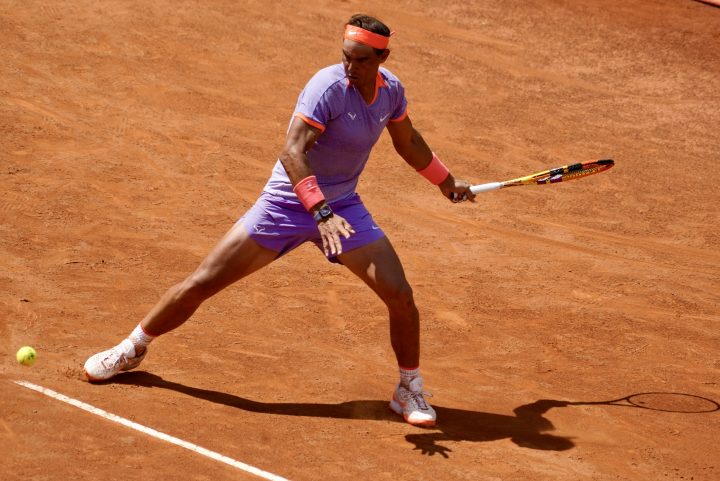
A hard fought and long encounter seemed almost inevitable, but the Polish 27-year-old swept five games in a row to take that first set, saving two more break points in the seventh game. He was mixing up his ground game beautifully, hitting high trajectory shots to keep Nadal at bay and off balance, then ripping flat shots to rush the Spaniard into errors. In the second set, Hurkacz broke early and completely outclassed Nadal. He also served him off the court, winning 16 of 17 points on his devastatingly effective delivery. With one more break at the end, Hurkacz surged to a 6-1, 6-3 triumph.
A day later, Djokovic, the six-time Italian Open victor, met Tabilo in his third round contest. Djokovic had played well in his second round meeting against the Frenchman against Corentin Moutet to win 6-3, 6-1. But afterwards, Djokovic was hit in the head by a water bottle while signing autographs. He had the next day off but when he returned to play Tabilo, the Serbian was almost unrecognizable. Beaten 6-2, 6-3, Djokovic never even reached deuce on the Chilean’s serve. On top of that, Djokovic, broken four times in the match, double faulted on break point thrice including at set point down in the first set and when he was behind match point in the second. Tabilo was terrific off the ground and on serve, but Djokovic was listless, lacking in purpose and seemingly disoriented. Some astute observers including Jim Courier thought Djokovic might have suffered a concussion from the freakish water bottle incident, but he did tests back in Serbia which indicated that was not the case.
Now Djokovic has decided to give himself a chance— if all goes according to plan— to potentially play a string of much needed matches at the ATP 250 tournament in Geneva this week. All year long, he has played only 17 matches, winning 12 of those duels. But nine of those contests were at the beginning of the season in Australia. Since then, he has played only eight matches. On the clay, he went to the semifinals in Monte Carlo where he benefitted from four matches, but he skipped Madrid and hoped to find his form again in Rome.
Realizing that losing in the third round there left him not only lacking in match play but not up to par in terms of confidence as well, Djokovic will try to make amends in Geneva. A good showing in that clay court tournament— either winning the tournament or at least making the final—would send the Serbian into Roland Garros feeling much better about his chances to win the world’s premier clay court championship for the third time in four years and the fourth time overall in his career.
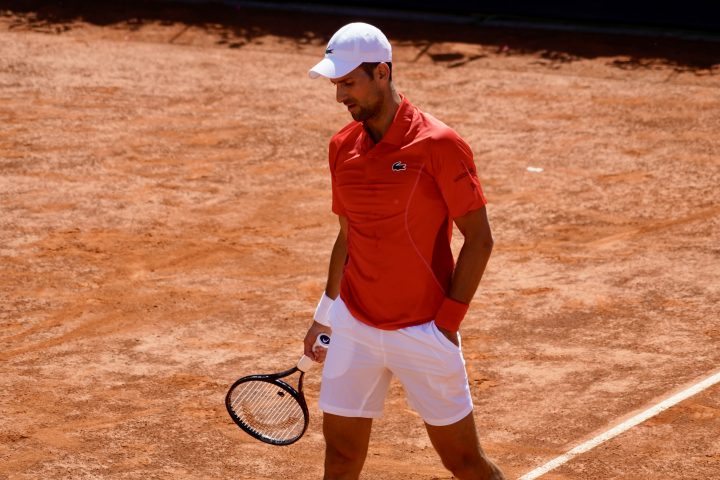
How do the other favorites stack up? It is awfully difficult to assess either Carlos Alcaraz or Jannik Sinner. Alcaraz missed Monte Carlo and Barcelona and probably rushed his return in Madrid, losing in the high altitude to Andrey Rublev in the quarterfinals. Then he was forced to miss Rome. He is clearly underprepared. As for Sinner, he played well in Monte Carlo before losing a semifinal to Tsitsipas. He advanced to the quarterfinals of Madrid but defaulted against Felix Auger-Aliassime with a hip injury.
Will Alcaraz and Sinner be back at full force in Paris? I have my doubts, but the fact remains that Sinner has been the best player in the world this year, capturing his first major in Melbourne at the Australian Open, adding titles in Rotterdam and Miami, and winning 28 of 30 matches over the course of the season. Alcaraz broke out of a long slump to defend his title at Indian Wells, but missing almost all of the clay court circuit en route to Rome has surely disrupted his rhythm.
I would make Zverev the slight favorite to win his first Grand Slam tournament at Roland Garros. If Djokovic can turn things around this week and rekindle his game, there is no reason he can’t succeed at Roland Garros again. I make him the second favorite. Out of respect for Alcaraz’s innate talent and unmistakable clay court comfort, I see him as the third most likely to succeed with Sinner close behind him. But that is assuming they are fit to play and fully ready to go.
Tsitsipas and Casper Ruud must be taken seriously as candidates for the title in Paris. Tsitsipas upended Medvedev and Zverev in 2021 to reach the Roland Garros final, and then found himself up two sets to love up against Djokovic before losing that hard fought battle in five sets. Ruud has been to the last two French Open finals, bowing against Nadal in 2022 and Djokovic a year ago. They started this clay court season magnificently, with Tsitsipas defeating Ruud in the Monte Carlo final and Ruud reversing that result in the final of Barcelona. Both men figure to be in the thick of things this time around at Roland Garros.
Where does Nadal fit into this picture? He will surely be more inspired at his home away from home than he was in his three other clay court tournaments leading up to Roland Garros, but it will take a monumental effort for the 14-time French Open victor to rule again this time around. With a decent draw, he could get to the round of 16 or perhaps the quarterfinals, but even that will be a hard task for him after all he has endured physically the last couple of years. Nadal turns 38 on June 3. If he somehow prevails once more in Paris, it would be the single most astonishing achievement of his sterling career.
The battle for clay court supremacy at Roland Garros will be fierce. The leading contenders will be highly motivated to find success. The defending champion will be in full pursuit of a 25th Grand Slam title. Inevitably, some gifted players will be ready to emerge, and others will be determined to reemerge. I am very much looking forward to watching it all unfold and discovering who will be the last man standing at the clay court capital of the world.
NOTE: All photos via Francesca Micheli/Ubitennis
Comments
Can Defensive Tennis Still Be A Success Story In Women’s Tennis?
Slam triumphs, top rankings: in just a few years we have witnessed the rise and fall of a certain way of playing tennis. So what’s really been happening? Kerber, Halep, and Wozniacki have been the latest successful performers of defensive gameplay.
Published
2 months agoon
13/05/2024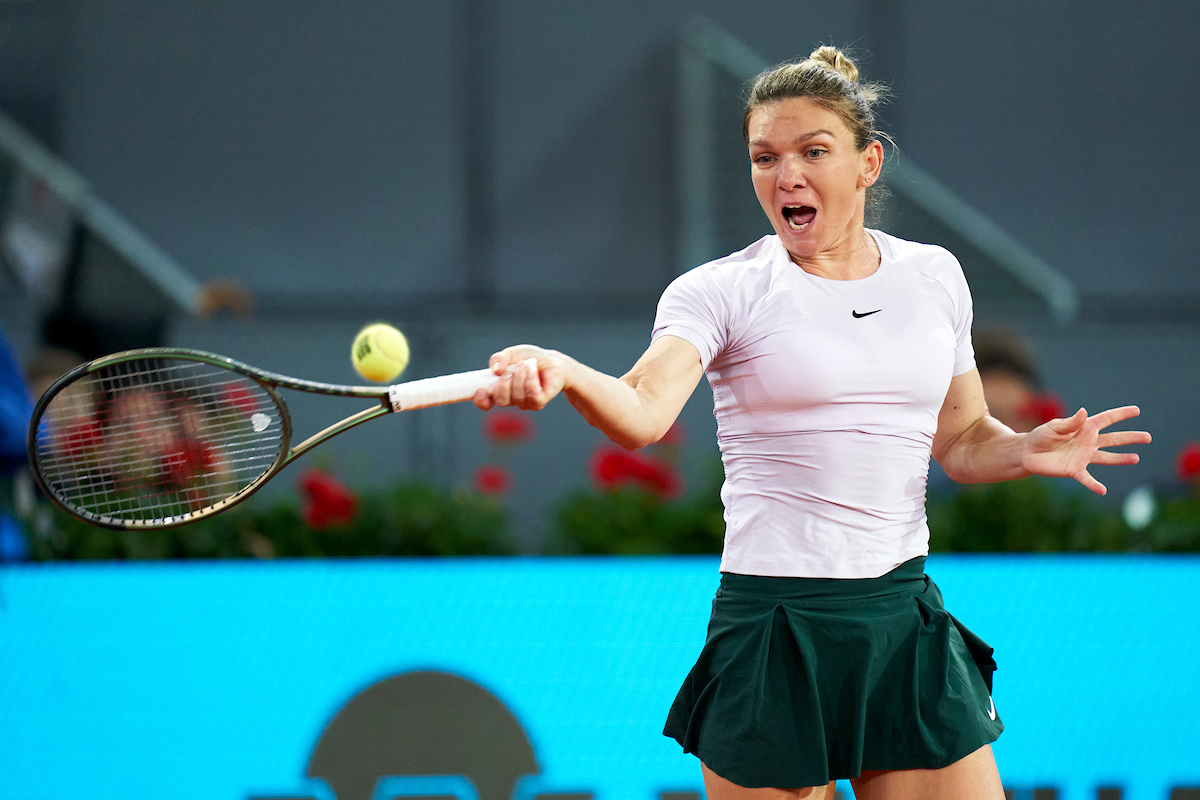
The last two WTA 1000 events, Miami and Madrid, whose final featured Danielle Collins vs. Elena Rybakina and Iga Swiatek vs. Aryna Sabalenka respectively, have confirmed a trend that in recent seasons seems more and more entrenched in the women’s tour: the prevalence of offensive tennis over defensive tennis.
Compared to a few years ago, things seem to have profoundly changed, to the point of almost being reversed. This does not mean that a certain type of “reactive” game has disappeared, nor that tennis based on the effectiveness of the defensive component has been scrapped. Yet, it is a matter of fact that players who rely predominantly on this approach struggle to break through and reach the top positions, unlike just a few years ago.
Before trying to identify the reasons for this phenomenon, it is necessary to verify whether the thesis is true. Here are some data. Below are the WTA rankings of the past years starting from 2015. I have highlighted in yellow the players who, in my opinion, can be associated with a defensive type of tennis.
A first comment on the 2015-17 period and the players I highlighted. Few doubts about Wozniacki, Kerber, Svitolina, and Errani. These are athletes who were never afraid of engaging in long rallies, and who often strove to turn the match into an endurance challenge, an arm wrestle over durability. It was not logical for them to seek quick and rushed points.
Including Simona Halep may seem less obvious. However, in my view, in her approach there prevails a tendency to rely on a “reaction” strategy, hitting back at her opponent’s choices; a counter-attack game, specular to an idea of pure aggressive tennis based on systematically and immediately getting the upper hand in rallies.
That is why I also highlighted Radwanska and Sevastova. In their case, it was mainly their lack of power that forced them to leverage their opponent’s power. As a result, hitting a winner could not be their first option. Winning points by eliciting errors from their opponent was far easier, simply by lengthening the rallies.
I was tempted to include Stephens and Kuznetsova as well, but in their case the matter is particularly complex because they are such eclectic players that they are difficult to confine to just one category. In fact, on the occasion of Sloane Stephens’ victory in the 2017 US Open, I decided to describe Stephens as “indefinable.”
Now let’s move on to the next three years, 2018 to 2020.
2018 represents the pinnacle of defensive tennis, with four of its icons at the top of the rankings and three more in the top 15. After all, 2018 is the year that sees Wozniacki win in Australia (defeating Halep in the final), Halep in Paris, and Kerber at Wimbledon. At the WTA Finals in Singapore, Elina Svitolina reaps the most prestigious title of her career.
If 2018 is to be considered the zenith of defensive tennis, since 2019 there has been quite a crushing decline, confirmed by the rankings of the last three years, 2021 to 2023.
Here follows a chart of the results in the Slams and WTA Finals from 2015 to 2024.
The final Top 10 ranking 2023 featured no player with a markedly defensive imprint. Daria Kasatkina was the only flagbearer holding on in the top 20. Players deploying aggressive tennis now seem to have taken the lead in operations.
Which are the causes that have led to the current scenario? I have identified three, which may also have been acting jointly.
1) Lack of generational turnover
One possible thesis is that the structural conditions of the women’s tour haven’t changed significantly, but that we are simply going through an episodic lack of generational turnover in defensive tennis. A temporary blackout which is bound to be overcome over time.
Wozniacki (born 1990) and Kerber (born 1988) were halted first by physical issues and then by maternity leave. Maternity also for Svitolina (born 1994), while Halep (born 1991) has been sidelined for almost two years by her doping case. In essence, all of the strongest defensive tennis players have disappeared from the top ranks due to factors unrelated to the court; somewhat prematurely, and that is also why there has not been time to find successors.
On the other hand, as of today, there are not many players aged under 30 on the horizon. I would mention Mertens (born 1995) and Kasatkina (born 1997). If we take into account that a possible alternative like Sorribes Tormo (best ranking 28) is 27, it’s quite hard to identify who can perpetuate defensive tennis.
2) Changed game conditions
For this second hypothesis, we are venturing along a complex and uneven path, which would require much more space for being addressed as it deserves. In short, the proposition holds that “slow” playing conditions favour defensive tennis, whereas “fast” playing conditions snugly fit with aggressive tennis. Should this hypothesis turn out to be grounded, organizers would simply have to decide to speed up or slow down the playing conditions and tables would be turned.
I recall the “very slow” 2018 WTA Finals in Singapore, won by Svitolina over Stephens. As far as I am concerned, I do not have such data to suggest that in recent years the playing conditions have been sped up, thus penalizing defensive players. Almost certainly the last Finals (Guadalajara, Forth Worth, and Cancun) were played in faster conditions than the previous editions held in Asia, but it is far more complicated to prove this for the Slams and other major tournaments.
I remember that when talking about playing conditions, not only the surface of the courts should be taken into account, but also the balls used (as well as humidity, altitude, etc). And for some essential data there no certainties, which means that the thesis is possible, but not provable.
3) Further growth of offensive players
Third hypothesis: in recent seasons new aggressive players who have risen to the very top have also enhanced the quality of their tennis, raising the bar to such heights which appear to be out of the reach of defensive players. Ultimately, offensive players have been making greater strides than defensive players.
I would say that such growth has manifested itself in two different directions. On the one hand, some players have further strengthened the offensive component, starting with the quality of their serve or and groundstrokes (as in the case of Rybakina and Sabalenka).
On the other, fewer “one-dimensional” tennis players have emerged. Currently we are seeing athletes who are comfortable not only when commanding the rally, but also when compelled to defend themselves. Let’s consider the latest year-end No. 1s: we went from Kerber/Halep (2016-18) to Barty/Swiatek (2019-2023). Well, both Barty and Swiatek were and are players capable of producing more wins than Angelique and Simona, but without going down when under pressure or scurrying and scrambling.
Wozniacki, Kerber, and Halep have relied on their great mobility and superior court coverage skills to reach the top. However, today No. 1 spot is held by a tennis player like Swiatek who, besides being a remarkable ball-striker, in terms of mobility is not at all inferior to Wozniacki & Co.
Indeed, my personal belief is that Iga is probably the best-moving tennis player since Steffi Graf. Maybe not yet when moving forward, but at least horizontally, off her right and left wing. In fact, as well as being endowed with a superlative rapidity and responsiveness, Swiatek possesses phenomenal coordination skills. A gift that enables her to organize her swing in very few moments, even if she is called upon to execute it at the end of a sprint or lunge, perhaps sliding. This means that those players who rely mainly on defensive skills are likely to find themselves lacking sufficient weapons to face an opponent with such qualities.
Conclusions
This is the current situation. What about the future? Since I do not possess a magic crystal ball, I do not feel like reciting a “de profundis” for defensive tennis. Things could change, especially in the long term.
In the short term, there is still the possibility that the “senior” players will be able to retrieve their best levels. After all, already last year at Wimbledon Svitolina was able to reach the semifinals after ousting Swiatek in the quarters. And probably if she had managed to defeat Vondrousova in the semifinals, in my opinion, she would have had very good chances against Jabeur, considering their records in finals (Ons 5 won and 8 lost, Elina 17 won and 5 lost).
Before being halted by Vondrousova, Svitolina had appeared as full of conviction, recharged by her maternity break. Which brings us back to the mental component, which can sometimes prove to be the extra weapon, capable of overshadowing physical-technical aspects. If a defensive player endowed with an exceptional killer instinct were to burst into the WTA tour, quite different scenarios might open up.
Translated by Carla Montaruli

Paris Olympics Daily Preview: Osaka Plays Kerber, Nadal Teams with Alcaraz

Tennis At The 2024 Paris Olympics: Five Things You Need To Know

Rafael Nadal’s Double Olympic Bid In Doubt, Confirms Coach Moya

Matteo Berrettini extends his winning streak to eight consecutive matches to reach the semifinal in Kitzbuehl

Novak Djokovic’s Potential Second Round Clash With Rafael Nadal Headlines Olympics Draw

Wimbledon Says No To Euros, No To Sunday Starts But Yes To An Andy Murray Statue

Wimbledon: Frances Tiafoe – ‘I Was Losing To Clowns And Took The Game For Granted’

Andrey Rublev Explains On-Court Outburst Following Wimbledon Exit

EXCLUSIVE: Sumit Nagal Brings Indian Tennis To The Main Stage But He Has Concerns About The Future

(VIDEO) Jannik Sinner Set To Renew Rivalry With Defending Champion Alcaraz, Djokovic Ready To Play

(VIDEO) What Is Wrong With Jannik Sinner?

(VIDEO) Ubaldo And Steve Flink – “Djokovic Was Too Flat, Alcaraz Triumphs Yet Again At Wimbledon”

(VIDEO) Steve Flink, Ubaldo On The Wimbledon Women’s Final: ‘The Better Player Won But Did Inexperience Play A Part?’

(VIDEO) Ubaldo And Steve: “Paolini’s Resilience Earns Her Another Stunning Grand Slam Final”

(VIDEO) Amazing Lorenzo Musetti Sets Up Djokovic Showdown At Wimbledon
Trending
-

 Hot Topics3 days ago
Hot Topics3 days agoNo Olympic Village Stay For Novak Djokovic In Paris, Says Delegation
-

 Latest news3 days ago
Latest news3 days agoWorld No.634 Laura Samson Reaches First WTA Quarter-Final At 16
-

 Hot Topics2 days ago
Hot Topics2 days ago(VIDEO) What Is Wrong With Jannik Sinner?
-

 Hot Topics3 days ago
Hot Topics3 days agoFive Talking Points Ahead Of The 2024 Olympic Men’s Tennis Tournament
-

 Focus2 days ago
Focus2 days agoJannik Sinner Withdraws From Olympics Due To Tonsillitis
-

 Focus2 days ago
Focus2 days agoMatteo Berrettini battles past Alejandro Tabilo to reach the quarter final in Kitzbuehl
-

 Focus2 days ago
Focus2 days agoCoco Gauff ‘Proud’ Of Being Named Olympic Flagbearer alongside Lebron James
-

 Hot Topics2 days ago
Hot Topics2 days agoAndy Murray At Peace With Retirement Decision Ahead Of Olympic Farewell

